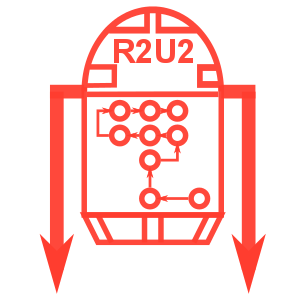Embedding#
When using R2U2 as a library within a user-provided application, configuration and execution of the monitor becomes the callers responsibility.
The r2u2_core crate is written in no_std and includes the core of R2U2 with specified API calls. Both r2u2_cli and
r2u2_cortex_m_example demonstrate examples of how to utilize the r2u2_core crate. r2u2_cli allows users
to utilize R2U2 through a commandline interface, and r2u2_cortex_m_example demonstrates how to embed R2U2 on a microcontroller.
r2u2_coreis available as a publically accessibly crate here for easy import into applications: https://crates.io/crates/r2u2_coreDocumentation on
r2u2_coreis available here: https://docs.rs/r2u2_core/latest/r2u2_core/
Reserving Memory#
The “static” in the name “R2U2 static monitor” refers to the monitor not perform any memory allocation calls, it is the user’s responsibility to provide proper sizing parameters. A Monitor struct is used to represent the state and memory of an instance of R2U2. The get_monitor function will setup a monitor with default extents, see configuration to adjust those sizes.
C2PO Specification Input#
Each R2U2 static monitor monitors its own specifications that have been specified utilizing C2PO. It is the user’s responsibility to set the C2PO binary correctly. The specification binary can be passed by reference as &[u8] when creating the monitor with get_monitor or updated with update_binary_file.
Note
The xxd -i [file path to C2PO binary] terminal command will dump the binary compiled by C2PO into a byte array.
Signal Input#
System state values, called signals, are read from the signal vector by the monitor on each step.
It is the user’s responsibility to set these values correctly using the load_bool_signal, load_float_signal, load_int_signal, and load_string_signal functions. The signal vector itself is an array on integers/floats/booleans.
In the R2U2 CLI, the CSV helper is used to read signal values and load them into the monitor’s signal vector.
Consult r2u2_cli/src/main.rs for an example of loading the signal vector.
Verdict Output#
Verdict output is accessible via the get_output_buffer and get_contract_buffer functions.
See Output for more details.
Initializing and Running the Monitor#
As demonstrated in r2u2_cli/src/main.rs, a standard life-cycle for an R2U2 monitor is:
A monitor must be created utilizing
get_monitor. The specification file from C2PO must be passed by reference as&[u8]. The specifications can later be updated withupdate_binary_file; this will also reset the monitor to its intial state.Signals must be loaded in according to the mapping specified when compiling the specification file through
load_bool_signal,load_float_signal,load_int_signal, andload_string_signal.Run the monitor for a single timestep with
monitor_step.Get output data through
get_output_bufferandget_contract_buffer.Repeat steps 2-4. (Optionally check for overflow with the output of
monitor_steporget_overflow_error.)
